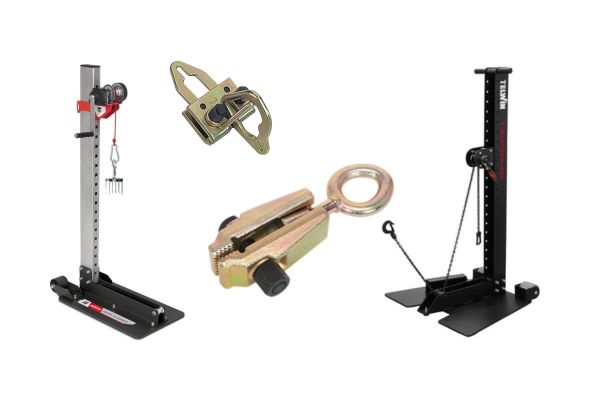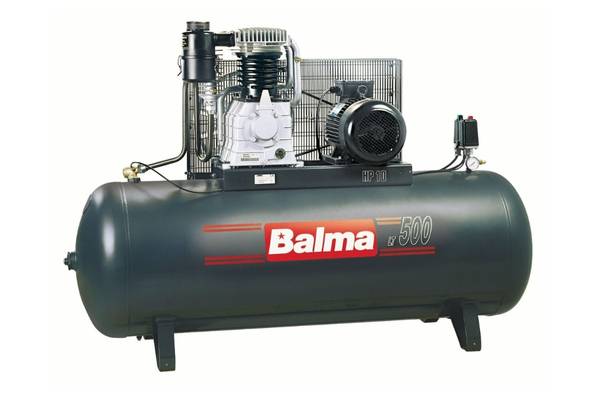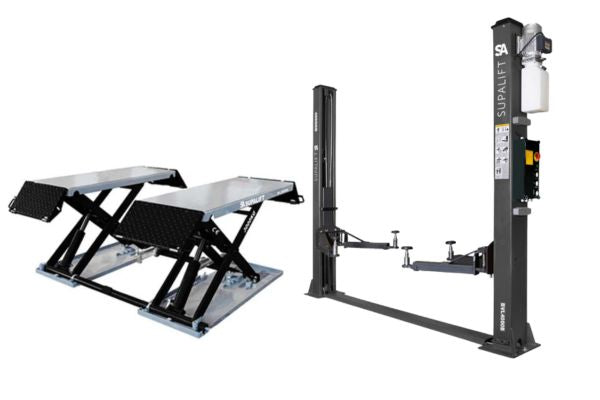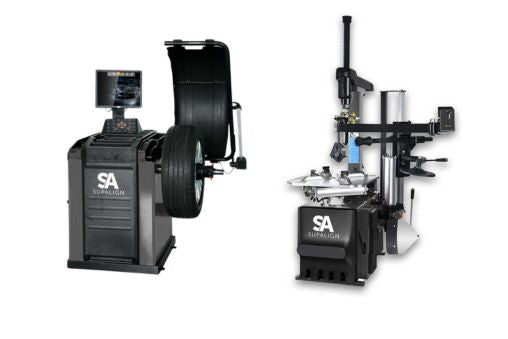NEW Glue Pulling Systems- In Stock!
NEW Glue Pulling Systems- In Stock!
BODYSHOP
WORKSHOP
WELDING
TOOLS
SAFETY
AIR DRILLS
Shop Our Range of Air Drills.
Discover top-notch air drills designed for precision and efficiency at BWS. Our air drills offer superior performance and durability. Find the perfect air drill for your needs and ensure long-lasting functionality. Shop now!"
Choosing the Right Air Drill: A Short Guide
1. Determine Your Needs:
- Before choosing an air drill, consider the type of tasks you'll be performing. Different jobs require different features and specifications.
2. Power Requirements:
- Check the required air pressure (PSI) and air volume (CFM) for your tasks. Make sure your air compressor can provide the necessary power.
3. Drill Chuck Size:
- The size of the chuck determines the maximum drill bit diameter the air drill can accommodate. Choose a size suitable for your drilling needs.
4. Speed and RPM:
- Different air drills have varying speeds measured in RPM (rotations per minute). Higher RPM is ideal for drilling tasks, while lower RPM is better for driving screws.
5. Keyed vs. Keyless Chuck:
- Keyed chucks require a chuck key for bit changes, while keyless chucks allow for quick and tool-free bit changes. Choose based on your convenience and preference.
6. Reversible vs. Non-Reversible:
- Reversible air drills allow you to change the direction of rotation, which can be useful for tasks like removing screws or fasteners.
7. Ergonomics and Comfort:
- Consider the design and grip of the air drill. A comfortable grip and well-balanced tool can reduce fatigue during prolonged use.
8. Durability and Build Quality:
- Look for air drills made from quality materials like metal housings and precision engineering for durability and long-term performance.
9. Brand and Warranty:
- Opt for reputable brands with good customer reviews and warranties. A warranty ensures you're covered in case of defects or issues
WHY BUY FROM BWS?





FAQ
-
When selecting air tools, performance and power are key. The power of an air tool is usually measured by its torque output or effectiveness in performing tasks. Air pressure and CFM (Cubic Feet per Minute) requirements are crucial for optimal functioning. Ergonomics, such as a comfortable grip and balanced weight distribution, are important for ease of use. Durability, based on the construction materials, and features like variable speed control and quick-change mechanisms, should also be considered
-
Air drills offer numerous benefits. They enhance productivity and efficiency, are cost-effective in operation and maintenance due to fewer parts, and are ergonomically designed for ease of use. Additionally, air drills are lighter than their electric counterparts, offering superior power-to-weight ratios. They are also highly reliable, ideal for manufacturing and maintenance applications, and less prone to electrical issues like short circuits
-
Air drills come in different forms such as straight , 90 degree or pistol grip. The also have features such as reverse direction or keyless chucks. They all work the same way though in that they use air as its primary driver through an air motor with vanes.
-
Pneumatic drills are renowned for their efficiency and robust performance, especially in demanding industrial settings. They offer several advantages over their electric counterparts, including a consistent delivery of power without the risk of overheating, lighter weight due to simpler internal mechanisms, and enhanced durability owing to their fewer moving parts and lack of electrical components. These attributes make them a preferred choice in various fields like construction, automotive repair, and manufacturing, where high-powered and reliable tools are essential.
Air Cutting tools

How Pneumatic Drills Operate: An Insight
Power Source: The Role of Compressed Air
The pneumatic drill starts its operation by connecting to an air compressor. This compressor is vital as it provides the high-pressure air that drives the drill.
Triggering the Drill: Air Flow Control
When the drill's trigger is pressed, it activates a valve that allows compressed air to flow into the drill, kickstarting the drilling process.
Energy Conversion: From Air to Mechanical Motion
Inside the drill, there's a pneumatic motor designed to convert the energy from the compressed air into mechanical rotation, essential for drilling action.
Drill Bit Dynamics: The Core of Drilling
This mechanical rotation is transferred to the drill bit, enabling it to rotate rapidly and perform various drilling tasks efficiently.
Drilling in Action: Practical Application
The rotating drill bit allows the pneumatic drill to perform its intended functions, such as making holes or chipping materials, depending on the bit type.
Exhaust Mechanism: Discharging Used Air
After powering the motor, the used air is expelled through an exhaust system in the drill. This not only disposes of the air but also helps cool down the drill during operation.
Advantages of Pneumatic Drills
Pneumatic drills are valued for their efficiency and strength, especially in demanding tasks. They offer a consistent power supply without overheating risks and are lighter and more durable compared to electric drills.















































































